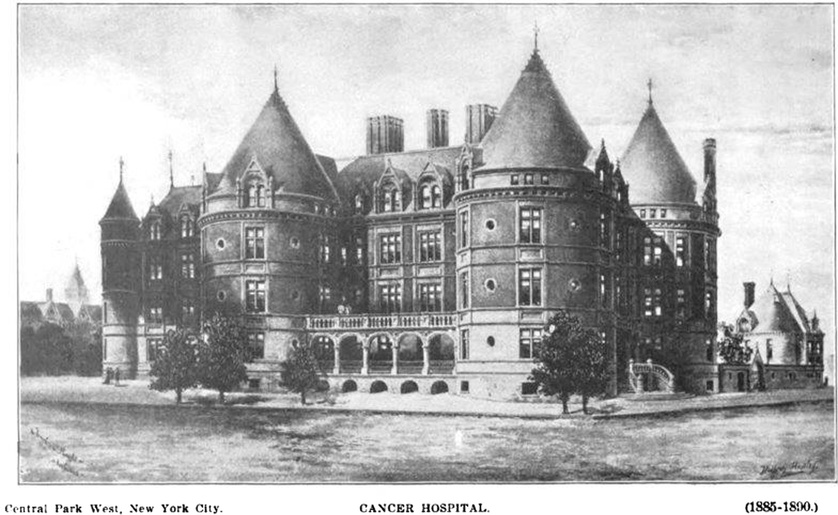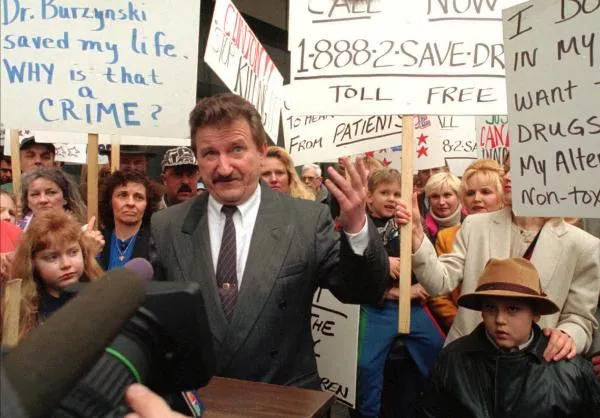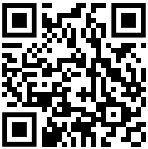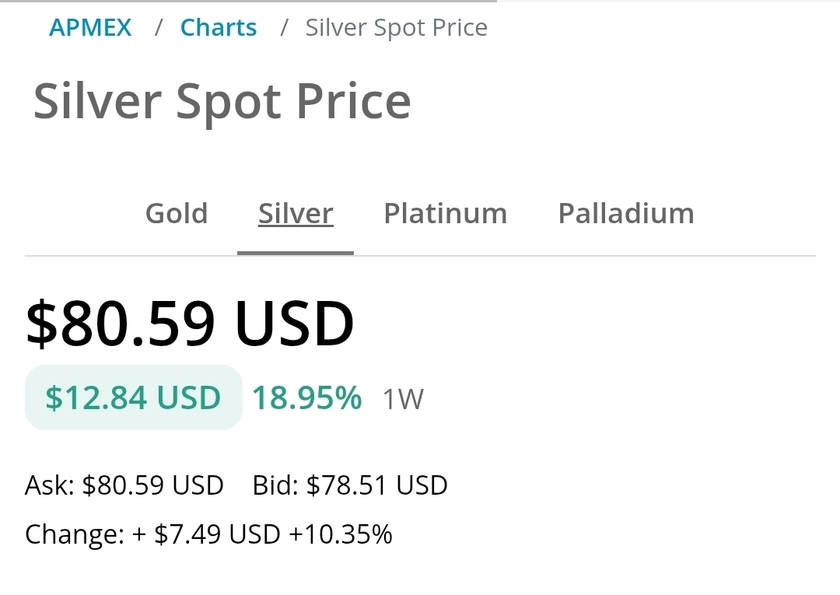Born in 1839, John D. Rockefeller would go on to become one of the great robber barons and industrialist tycoons of American history. By the turn of the 20th century, Rockefeller controlled 90% of the oil refineries in the US through his company Standard Oil, becoming in the process America’s first billionaire.
Of course, in 1911, Standard Oil was ruled by the US Supreme Court to be an illegal monopoly in violation of antitrust laws and forced to break up. Like his father, John D. Rockefeller had built his success on illegality, cons, and scams.
Still, this was not enough for Rockefeller. He wanted more.
How Rockefeller Targeted Medicine
At the time, chemicals made from oil, known as ‘petrochemicals,’ were being discovered and developed in the US. This included the discovery that pharmaceutical drugs could be made from oil, which Rockefeller saw as an opportunity to expand his empire. The key was that petrochemicals, unlike natural health remedies, could be patented, presenting an enormous opportunity for Rockefeller profits.
There was only one problem – at the time, natural, herbal, and traditional medicines were very popular in the US. Something like half of the doctors and medical colleges in the country were using holistic medicine, natural remedies, and knowledge taken from Indigenous Native Americans. Rockefeller needed a way to eliminate the competition, to create a monopoly in medicine as he had done with oil.
And so, he went to his good friend Andrew Carnegie, another robber baron who had gotten rich through his monopoly of the steel industry and, incidentally, one of the country’s leading eugenicists. Together, the two men hatched a plan to take over American medicine.

The Creation of Big Pharma
From the cover of the Carnegie Foundation, they would send a man named Abraham Flexner around the country to report on its medical colleges and hospitals. After visiting all 155 medical schools existing at that time in the US and Canada, he completed the seminal Flexner Report in 1910.
Following the directions of his employers, Flexner called in his report for a total restructuring of the American medical system, most specifically, for the pushing aside of natural and traditional remedies in favor of Rockefeller pharmaceuticals. The report even specifically mentioned the eradication of “dissidents,” appropriately, since this is exactly what happened.
Almost immediately after the report was issued, medical schools teaching things like naturopathy, homeopathy, electromagnetic field therapy, and so on, were told to drop these things or close. More than half of all medical colleges in the country did close, and many non-compliant doctors were demonized and even jailed.
But Rockefeller and Carnegie went further, offering huge grants to medical schools and hospitals so long as they only taught and practiced Rockefeller medicine, and allowed Rockefeller agents on their boards of directors to ensure compliance.
It was the carrot and the stick – those who agreed got funded with big money, those who didn’t were crushed.
In this way, all medical colleges in the country were streamlined and homogenized, with doctors all learning the same thing – how to use and prescribe Rockefeller’s patented drugs.
But, like any good monopolist, Rockefeller went further in seeking to consolidate his control. He took over the AMA and emboldened it as the gatekeeper of scientific thought and witch hunter of alternative medical practices. He took control of the FDA in order to control the approval process for new drugs. He even founded the American Cancer Society in 1913. Within a few short years, Rockefeller was in total control of the American medical system in both thought and action.
The result of this takeover, the product of this monopolist son of a conman and his eugenicist partner, would become known as “Big Pharma.”
That Big Pharma took over and monopolized American medicine, promoting their own patented, profit-making products and suppressing all others, isn’t even a conspiracy theory.
In fact, it was recorded for all to see in 1953 …
The Fitzgerald Report
In the early 1950s, US Senator Charles Toby enlisted an investigator with the Interstate Commerce Commission named Benedict Fitzgerald to examine allegations of conspiracy and monopoly in medicine. Toby had become interested in the issue after his own son had gotten cancer and been given less than two years to live by orthodox medicine before pursuing alternative treatments and being cured.
The resulting 1953 report, known as the Fitzgerald Report, was truly shocking. It concluded that Big Pharma had been involved in “a conspiracy of alarming proportions.”
First, there was
“The organized effort to hinder, suppress and restrict the free flow of drugs which allegedly proven successful in cases where clinical records, case history, pathological reports, and x-ray photographic proof, together with the alleged cured patients, are available.”
On top of that,
“Public and private funds have been thrown around like confetti at a country fair to close up and destroy clinics, hospitals, and research laboratories which do not conform to the viewpoint of medical associations.”
The report even noted that Big Pharma had conspired to suppress at least 12 promising cancer treatments, including mentioning Hoxsey Therapy by name.
It was an unfathomably damning report, making clear that the tentacles of a Big Pharma conspiracy to suppress alternative medicine were everywhere.
But as it turns out, the report did not go far enough …
The Suppression of Laetril as a Cure for Cancer
Oftentimes when a new natural cancer treatment appears, the assertion from the medical establishment is that the new treatment is either unproven, or disproven. There is no better example of what this really means in the era of Big Pharma than the case of a cancer treatment called Laetrile.
In 1952, a year before the Fitzgerald Report, a biochemist named Ernst Krebs proposed that cancer was a deficiency disease which could be cured with a compound called amygdalin, found in over 1,200 plants, and most specifically in the seeds of apricots. By extracting this amygdalin from apricot kernels, Krebs created a product he called Laetrile.
Over the course of many years, Krebs conducted numerous lab experiments on animals which showed that Laetrile was an effective cancer treatment, that somehow, it caused cancer cells to self-destruct.
By the 1960s, a doctor named John Richardson had picked up the research, and had even begun treating human patients with Laetrile. Unsurprisingly, the Rockefeller-controlled FDA launched a massive media campaign against Richardson and Laetrile, claiming that the treatment was toxic and dangerous. By 1971, the FDA officially banned Laetrile, and, in 1972, they stormed Richardson’s clinic and arrested him.
But even after Richardson was jailed, people kept asking about Laetrile, writing to government officials, medical journals, and scientific labs demanding answers. At this point, Big Pharma knew they had to put their foot down once and for all. They needed to undertake official testing which proved that Laetrile didn’t work.
The testing would take place at Memorial Sloan-Kettering Cancer Center in New York City, and what would happen next would come to be described as “one of the biggest medical cover-ups the world of cancer research has ever seen.”

The tests would be led and directed by Dr. Kanematsu Sugiura, known at that time as “the preeminent cancer researcher in America.” He had over 60 years of experience, publishing hundreds of academic papers on the subject. As one scientist said, “When Dr. Sugiura publishes, we know we don’t have to repeat the study, for we would obtain the same results he has reported.”
In 1972, testing began, with Laetrile being administered to mice with many different types of cancerous tumors. At its completion, Dr. Sugiura concluded that Laetrile stopped the spread of cancer, inhibited the growth of tumors, and acted as a cancer prevention. It even provided relief from pain and improved general health.
This seemed to be incredible news. Except, there were three Rockefellers sitting on the board of Sloan-Kettering, as well as a dozen more people representing companies making big money from Big Pharma. When they caught word of the test results, “all hell broke loose,” and another round of tests was ordered.
Unfortunately for Sloan-Kettering executives, the second round of testing only confirmed the first. Except this time, with two confirmed tests from the legendary Dr. Sugiura in the books, mainstream media was forced to cover it. Had a cure for cancer really been found, they asked?
Sloan-Kettering officials refused to speak with the media, refused to discuss the results or answer any questions, saying only in a prewritten statement that a third round of tests had been ordered in order to “clarify” the results, as if they had not been twice clarified already.
In this third test, a new wrinkle would be introduced – Dr. Sugiura would be blinded. He would not know which half of the mice would be receiving Laetrile, and which half would be given a saline solution, as if this eminently respected scientist was going to somehow manipulate the results.
After four weeks, Dr. Sugiura could see which of the mice were being given Laetrile, since mice in some of the cages had fewer and smaller tumors, while mice in the other cages showed no effects. Sloan-Kettering overseers who were supervising the project confirmed to Dr. Sugiura that he was correct. For a third time, Laetrile’s cancer treating properties were confirmed.
Except, arguing that Dr. Sugiura was no longer blinded since he knew which cages were which, Sloan-Kettering officials shut the tests down.
They would try yet again to get the results they were looking for with a fourth test. This time, not only would Dr. Sugiura be blinded, but the mice who were receiving the treatment would be mixed together with those who weren’t. Dr. Sugiura warned that this was dangerous because there was no dependable way to ensure the lab techs administering the treatment would be able to identify the correct mice every time. And, in fact, this is exactly what happened. Some of the mice who were purportedly only being given a saline solution saw their tumors stop growing.
“There’s something funny here,” Dr. Sugiura professed. The ‘something funny’ was that the treatments had been mixed, with many mice receiving some Laetrile and some saline solution, just as Dr. Sugiura had predicted.
Yet, in this case, the legitimacy of the results wasn’t important to Sloan-Kettering’s Rockefeller board. Immediately, they announced that “results from the experiment do not confirm the earlier positive findings of Sugiura.”
Then, they called a press conference attended by most of mainstream media and declared, “Laetrile was found to possess neither preventive, nor tumor-regressant, nor anti metestatic, nor curative anti-cancer activity” – the exact opposite of what the first three tests had shown.
At the end of the press conference, the floor was opened to questions from the media, which is when things took a dramatic turn.
“Dr. Sugiura,” someone shouted, “Do you stick by your belief that Laetrile stops the spread of cancer?”
The room fell silent as the fabled Dr. Sugiura rose to his feet and replied, “I stick.”
The next month, Sloan-Kettering executives appeared before a Senate subcommittee hearing to decide the fate of Laetrile. While it had been banned by the FDA in 1971, some states were challenging this decision.
At the hearing, Sloan-Kettering executives asserted, “There is not a particle of scientific evidence to suggest that Laetrile possesses any anti-cancer properties at all” … totally ignoring the three full lab tests of scientific evidence from “the preeminent cancer researcher in America.” As a result of the testimony, Laetrile was officially banned nationwide by 1980.
Afterwards, Dr. Sugiura was asked why Sloan-Kettering was so against Laetrile. “I don’t know,” he replied, “Maybe the medical profession doesn’t like it because they are making too much money.”
When Big Pharma says an alternative treatment has been disproven, this is what they mean.
Is Big Pharma Suppressing Information for Profit?
But what about if tests were not done in a Rockefeller-controlled lab. What if one were to do their own tests, build their own case studies, and present them to the appropriate authorities themselves?
One man provided an answer.
Stanislaw Burzynski was a Doctor of Biochemistry who immigrated to the US from Poland in 1970, where he took up a position as a researcher and assistant professor at Baylor University in Houston, Texas. There, he discovered something which he called antineoplastons – naturally occurring “molecular switches” in the human body which, Burzynski asserted, the body used to control cancer growth.
At first, Burzynski’s discoveries were well received by colleagues. In fact, so impressive was his work that he was offered a tenured position in Baylor’s Department of Pharmacology. He should have been thrilled, yet Burzynski knew that if he accepted, he would lose his independence as a researcher. So, he refused the position, instead choosing to found the Burzynski Research Institute in order to continue his work. On his way out the door at Baylor, his boss warned him, “Just wait, Burzynski. They’re going to kick your ass.”
In short order, Burzynski and his clinic were investigated by local medical authorities for using “unapproved medications,” while the Rockefeller-founded American Cancer Society put antineoplastons on its “unproven methods” list, and those who had been funding his research pulled their support.
In 1983, the FDA filed a lawsuit to get him to shut down his operation, and when this failed, FDA agents and federal marshals simply raided the Burzynski Research Institute and seized over 200,000 confidential documents.
Still Burzynski continued on. He raised millions of dollars through his Institute to pay for clinical trials for antineoplastons, money Big Pharma companies are more than happy to spend since they know they will recoup it when their products are patented. By the mid-90s, he was able to provide the FDA with sixty clinical trials, meeting the requirement for their Phase I testing.
For another decade he worked, compiling hundreds more clinical trials, meeting the requirements for Phase II of testing on his own at the cost of millions of dollars.
In 2011, Burzynski began Phase III testing, which involves thousands of participants and can last for years, again, at the cost of many millions of dollars. He was closing in on the finish line by 2013, which is when the FDA stepped in and put a stop to the trials. Their reason? They complained that the Burzynski Research Institute was doing all of the testing, when, of course, this is simply how the FDA approval process works. The only difference is usually the testing is being done by a Big Pharma company.
Finally, in 2017, the FDA cancelled antineoplaston clinical trials for good, refusing Burzynski the right to even conduct the tests. Moreover, Burzynski had his medical license revoked and was fined hundreds of thousands of dollars for his trouble.
The point made by Burzynski and his antineoplastons, by Sloan-Kettering’s Laetrile trials, is simple. It’s a case of ‘you’re damned if you do and damned if you don’t.’ If testing is conducted in a Rockefeller Big Pharma laboratory, it will be repeated and repeated and repeated until it gives the desired results, no matter how manipulated these results might be. And if you conduct the tests yourself, spending millions upon millions of dollars, the results will still not be accepted.

Big Pharma controls the testing, they control approval, they control academic thought. But look closer, and it goes even further than that.
Big Pharma employs 1,270 registered lobbyists in the halls of government, more than two Big Pharma lobbyists for every member of congress, at a cost of over $200 million per year. They also spend tens of millions of dollars every year financing political campaigns – nearly every member of congress is funded by Big Pharma. On top of that, Big Pharma lobbyists and executives are repeatedly put in charge of the government bodies tasked with overseeing the pharmaceutical industry, like the FDA. Simply, the production and sale of medicine is tightly regulated by government, and Big Pharma controls the government.
Is it really so hard to believe that Big Pharma would use its control of academia, science, and government, to suppress valuable information for their own profit?
In reality, suppressing truth for profit is as American as apple pie – from the 1950s, when tobacco companies fought to suppress lung cancer knowledge as people died, to modern times, when oil companies insist that the debate around climate change is still ongoing, even as the consequences scientists promised decades ago are all around.
But pharmaceutical companies? Those purportedly tasked with providing health? Would they really suppress a cure for cancer? And kill people?
Actually, that Big Pharma would knowingly and intentionally kill people for profit is not conspiracy, it is established fact, admitted on record in American courts.
How Big Pharma Created the American Opioid Crisis
In October of 2020, Big Pharma flagbearer Purdue Pharma pled guilty in court to criminal charges for its role in the American opioid crisis, agreeing to pay some $8.3 billion in the settlement.
Opioids were a new type of synthetic pain medication that emerged in the early-1990s, which Big Pharma companies like Purdue aggressively promoted while suppressing information about the dangers, most specifically, the extreme addictiveness. Today, not only is chronic pain more prevalent than ever in the US, but nearly a million people have died from opioid overdoses, and another 3 million have fallen victim to addiction.
In pleading guilty at trial, Purdue Pharma admitted on record to having supplied drugs “without legitimate medical purpose.” In other words, the purpose of opioids wasn’t medical, it wasn’t to cure pain; it was to get people addicted so they’d buy more. Purdue even admitted to paying off health insurance companies to deny coverage for alternative care, forcing people to take opioids, and paying off doctors to overprescribe their product to patients.
By February of 2022, four more of the largest Big Pharma companies had reached a $26 billion settlement for their own role in the crisis. These, along with Purdue, are the largest and most powerful pharmaceutical companies in the country, the ones who lobby governments and sit on medical boards. And here they are, on the record, poisoning people for profit.
Chemotherapy - The Only Legal "Cure" for Cancer
Apply this knowledge to cancer specifically, and think about what chemotherapy is.
The treatment was first conceptualized by doctors examining soldiers who had been exposed to mustard gas during World War II. Noticing that mustard gas had toxic effects on the blood cells of soldiers, doctors surmised that it could be used against cancer cells.
This was how the first version of chemotherapy, and model for all subsequent versions, was created, from a compound used as an agent of chemical warfare. This is what Big Pharma is telling cancer patients to put in their body.
Of course, it is no big secret that chemotherapy is toxic. Cancer patients are warned that side effects can include everything from vomiting and nausea, to infertility, to organ damage, and even death. They are even warned it can lead to a “second cancer.” In other words, patients are told chemotherapy might treat their cancer, but that it might also cause cancer; it might save their life, but it might also kill them. As one former president of the American Chemical Society succinctly put it, “chemotherapy does much, much more harm than good.”
A bit like opioids …
But that’s the point; there are no profits in the cure. Big Pharma needs people sick, so that people need more and more expensive “treatment.”
In this, the era of Big Pharma is alone in the history of medicine …
The Dinarian On Locals is a labor of love that I pour my heart and soul into during my personal time. Countless hours are dedicated to delivering you the most up-to-date, unfiltered, and authentic news and information. Your support means the world to me, and I invite you to consider making a donation or becoming a dedicated supporter of this project. Any amount of XRP donations can be sent by scanning the QR code below and are greatly appreciated. ~ Namaste🙏🏼The Dinarian





























